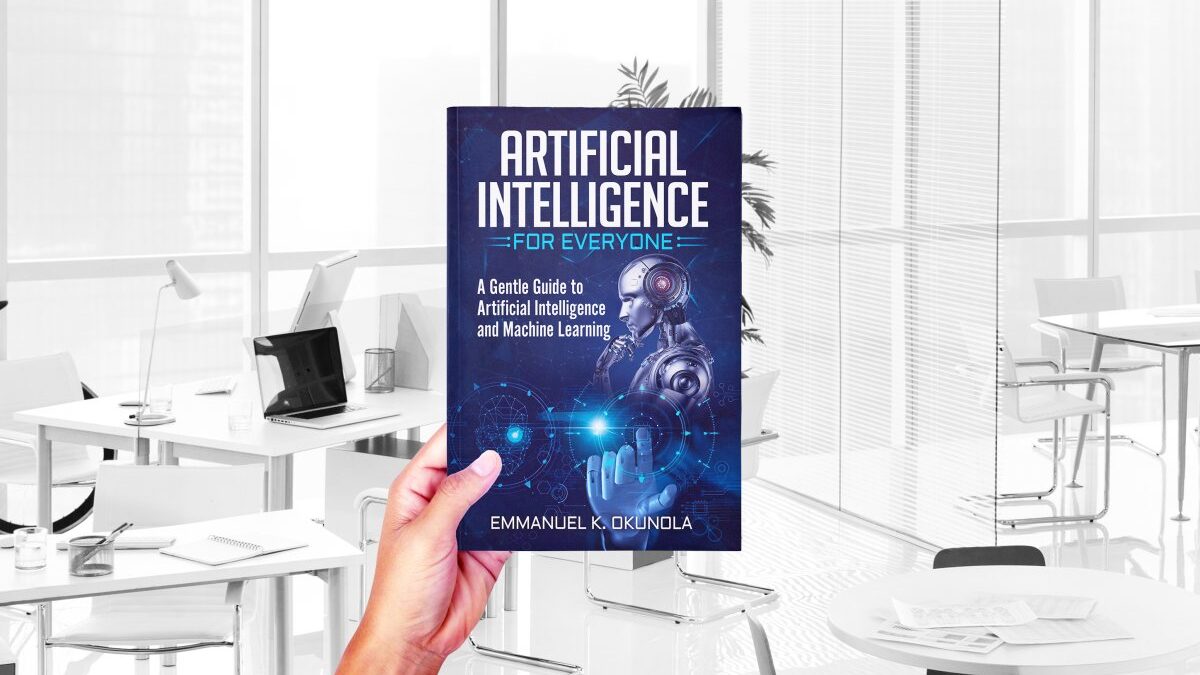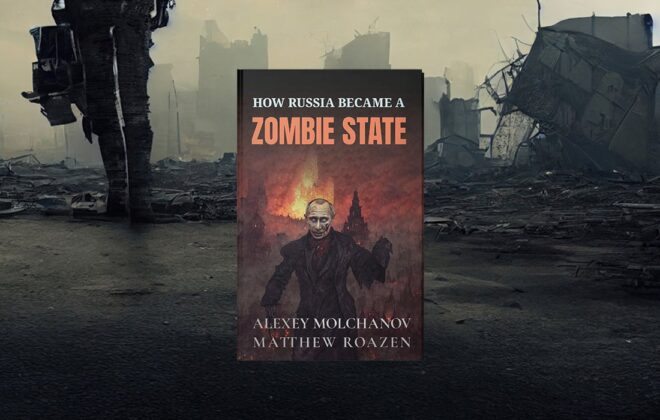Artificial Intelligence For Everyone by Emmanuel K. Okunola
A Gentle Guide to Artificial Intelligence and Machine Learning
In “Artificial Intelligence for Everyone: A Gentle Guide to Artificial Intelligence and Machine Learning,” the author unravels the complex world of artificial intelligence, making it accessible and engaging for readers of all backgrounds.
This carefully curated book will guide you through the rapidly evolving landscape of AI and machine learning, demystifying these cutting-edge technologies and explaining their real-world applications. The author’s writing style makes even the most intricate concepts simple to grasp, while his passion for the subject shines through on every page.
The book is filled with examples, case studies, and thought-provoking insights, painting a vivid picture of how AI and machine learning can be harnessed for practical use in various aspects of everyday life. Explore the power of data-driven decision-making and learn how to leverage AI for personal and professional growth.
Whether you’re a student, an aspiring technologist, a curious person, or a business leader eager to understand how AI can shape your organization’s future, this book will provide you with the insights needed to navigate the AI revolution confidently. From the history and ethics of artificial intelligence to hands-on descriptions of popular machine learning algorithms, “Artificial Intelligence for Everyone” is your essential roadmap for exploring the transformative power of AI and unlocking its limitless potential.
In “Artificial Intelligence for Everyone,” I draw upon my years of experience as an AI practitioner and educator, providing you with a trusted guide to this transformative field.
Excerpt from Artificial Intelligence For Everyone © Copyright 2023 Emmanuel K. Okunola
CHAPTER 1:
Introduction to Artificial Intelligence and Machine Learning
Artificial Intelligence (AI) enables machines to do things that usually need human intelligence, like recognizing speech or making decisions. AI has been around for decades and has gone through different developmental stages. As early as the 1950s, scientists started thinking about creating machines that could think like humans. They wanted to make machines that could independently learn, reason, and solve problems. But it was a challenging task to accomplish.
The History and Evolution of AI
AI research continued apace in the 1960s and 1970s, and people made significant discoveries. They created the first AI program, called the Logic Theorist. This program was able to prove mathematical theorems, and it was considered a big success. However, in the 1980s and 1990s, AI research slowed because the expectation that machines would improve at doing complex things like humans did not come to fruition. Researchers were discouraged when they did not achieve as many scientific breakthroughs in AI as they had expected.
In the 2000s, a new approach to AI called Machine Learning emerged. Machine Learning involves teaching machines to learn from data rather than being programmed by people. This approach was much more effective, leading to a renewed interest in AI research.
Today, AI is used in many applications, such as self-driving cars, virtual assistants, and games. However, there are still some challenges that need to be addressed. For instance, some people are concerned that AI may not be fair to everyone or may take people’s jobs away. Despite these challenges, AI has the potential to solve many problems, and it will continue to evolve and improve over time.
Examples of how artificial intelligence and machine learning can be used for medical imaging and diagnosis
Here are some examples of how artificial intelligence and machine learning can be used for medical imaging and diagnosis:
- Early detection of breast cancer: AI algorithms can be trained to detect early signs of breast cancer in mammograms, allowing for earlier diagnosis and treatment.
- Diagnosis of skin cancer: By analyzing images of skin lesions, AI systems can identify potential melanomas or other skin cancers, potentially leading to earlier intervention.
- Detection of lung cancer: AI can analyze CT scans of the lungs to detect signs of lung cancer in patients, which can help doctors make earlier diagnoses and more informed treatment decisions.
- Diagnosis of eye diseases: AI can analyze images of the eye to detect conditions such as diabetic retinopathy, glaucoma, and age-related macular degeneration.
- Detection of brain injuries: AI can analyze MRI scans to detect signs of traumatic brain injury, which enables doctors to make more informed decisions about treatment and rehabilitation.
- Diagnosis of heart disease: AI can analyze echocardiograms, angiograms, and other cardiac imaging to help detect and diagnose heart disease.
Personal Finance and Wealth Management
Artificial intelligence and machine learning have made significant strides in personal finance and wealth management. Here are some ways in which AI and machine learning are transforming personal finance and wealth management:
- Credit scoring: AI and machine learning algorithms can be used to develop more accurate credit scoring models. These models can analyze a wider range of data and provide more accurate assessments of an individual's creditworthiness.
- Financial planning: AI and machine learning can be used to develop more accurate financial planning models. These models can analyze an individual's income, expenses, and other financial data to provide personalized recommendations for achieving financial goals.
- Wealth management: AI and machine learning can be used to manage investments more efficiently. These technologies can analyze market trends and provide insights on how to optimize investment portfolios.
- Personalized recommendations: AI and machine learning can be used to provide personalized recommendations for financial products and services. These technologies can analyze an individual's financial data and provide recommendations for products and services that meet their unique needs.
- Natural language processing: AI and machine learning can analyze social media posts, news articles, and other sources of information to provide insights on market trends and financial products.
- Chatbots: AI-powered chatbots can answer questions about financial products and services. These chatbots can help individuals manage their finances more effectively and provide personalized recommendations for financial products and services.
Examples of Household Robots:
- Roomba: Roomba is a line of autonomous vacuum cleaners that use sensors and AI to navigate and clean floors. They use a variety of sensors, including optical, acoustic, and physical bump sensors, to map out the room and avoid obstacles. Roomba has been a popular household robot since its introduction in 2002 and has been a good example of how AI and machine learning can be used to make household chores easier.
- Nest: Nest is a smart thermostat that uses machine learning to learn your daily routine, even detecting when you're not home, and adjusting the temperature accordingly to save energy. Nest was acquired by Google in 2014 and is now part of Google's line of smart home products.
- Anki Vector: Anki Vector is a small household robot that uses computer vision and AI to interact with its environment. It has a camera, microphone, and touch sensors that allow it to recognize faces and respond to voice commands. Vector can play games, answer questions, and interact with its environment in a variety of ways.
- Jibo: Jibo is a social robot that uses natural language processing to interact with humans. It can recognize faces, answer questions, and respond to voice commands. Jibo has been used in a variety of settings, including homes, schools, and hospitals.
- Miko: Miko is a companion robot designed for children that uses machine learning to interact with them. It can recognize faces, answer questions, play games, and tell stories. Miko has been used in a variety of settings, including schools, homes, and hospitals, to help children learn and grow.
My profession is online marketing and development (10+ years experience), check my latest mobile app called Upcoming or my Chrome extensions for ChatGPT. But my real passion is reading books both fiction and non-fiction. I have several favorite authors like James Redfield or Daniel Keyes. If I read a book I always want to find the best part of it, every book has its unique value.







